In the last installment about the ongoing Disaster Planning for Historic Properties Initiative we focused on survey work in the City of Harrisburg. Since that time, the survey teams led by Commonwealth Heritage Group and ASC Group have moved on to other communities in Dauphin County.
Located at the northern end of the county, Lykens Borough is home to a large number of properties that are both over 45 years old and located in the 100-year floodplain. The survey teams spent more than a week collecting flood elevation data on 227 buildings throughout the borough. While there, we met many residents who talked about Tropical Storm Agnes and how flooding from the storm changed the community in profound and lasting ways.
Nineteenth Century Beginnings
Lykens was named for eighteenth-century settler Andrew Lycans or Lycons. The town was first laid out ca. 1830 and grew throughout the nineteenth and early twentieth centuries alongside coal mines operated by the Lykens Valley Coal Company. The large number of jobs created by coal mining led to prosperity for the town and attracted ancillary industries such as a foundry, machine shops, and a sewing factory.
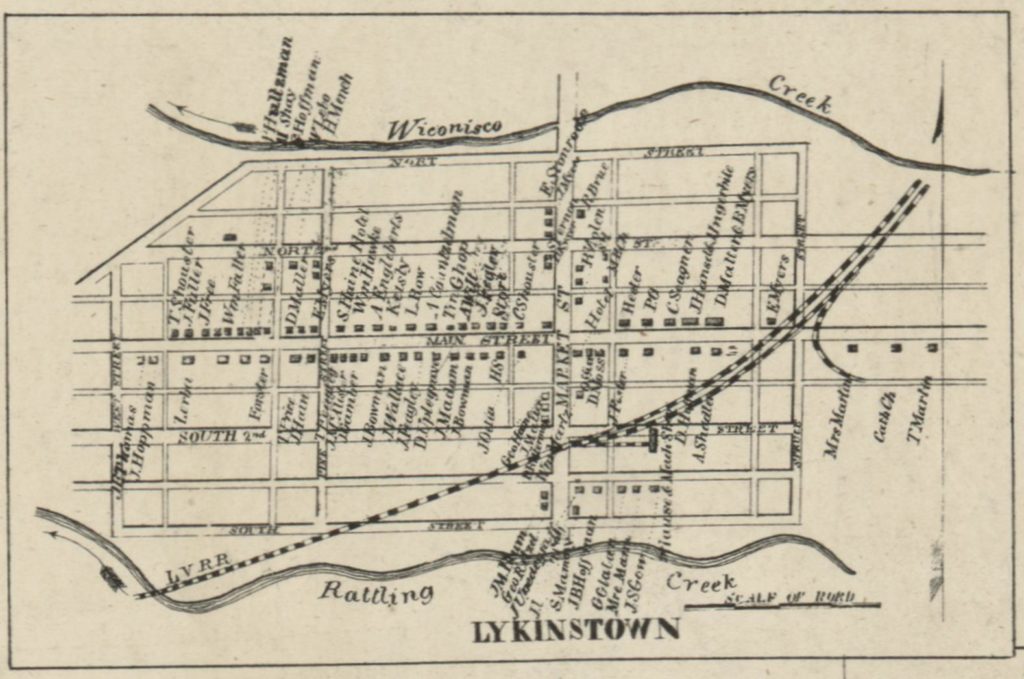
A Regional Center for Commerce and Recreation
By the 1930’s, the coal mines had closed, and Lykens transitioned to a regional center of commerce and recreation. Recreational community projects led by the Works Progress Administration (WPA), including a baseball field and swimming pool, were constructed during the Great Depression.
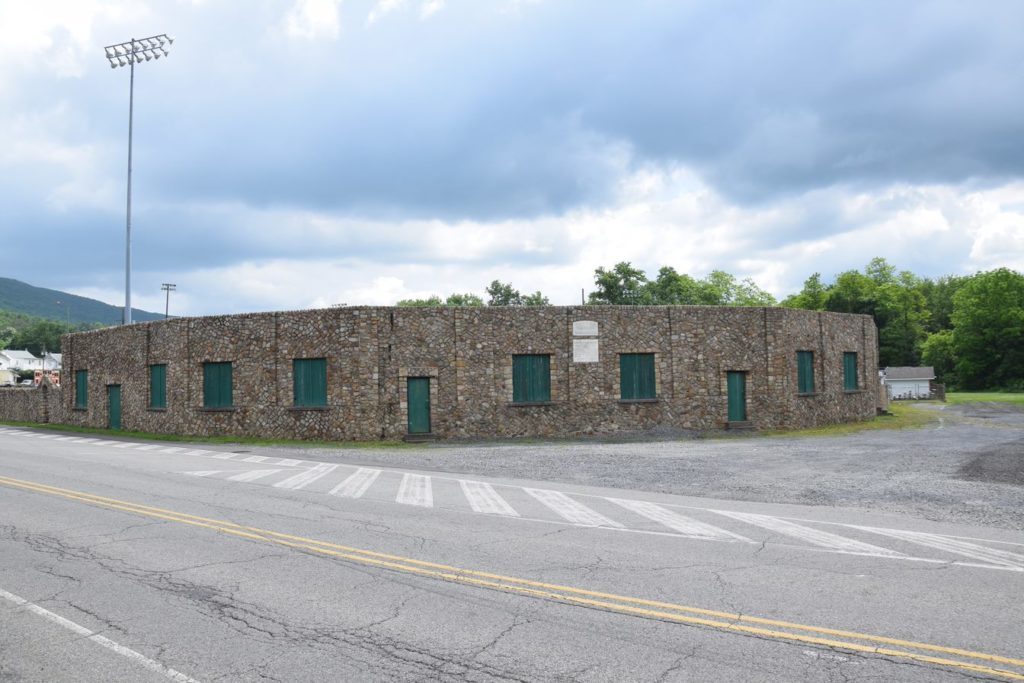
The WPA pool was actually the second one in town, with the first built in 1919 in the borough’s Glen Park. Both pools were constructed by building gates within Rattling Creek and developing improvements along the creek bank. Based on the descriptions provided by residents, the pools had a beach area, diving boards, and a slide. The WPA pool, located just south of Main Street at Division Street, also had a raised sandy beach with a stone retaining wall, and historical images show a pool house.
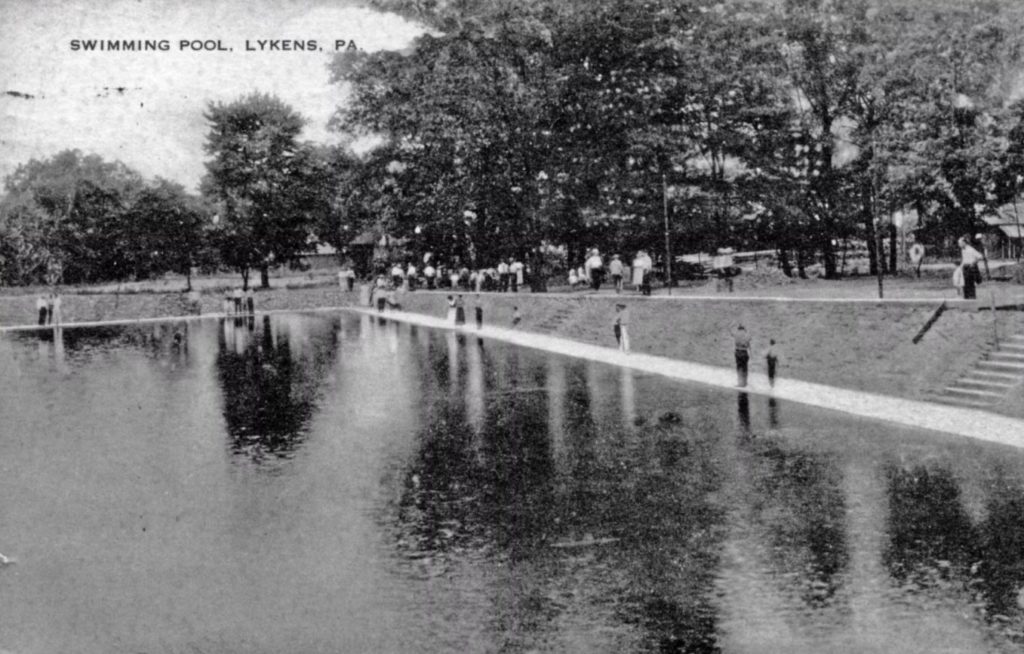
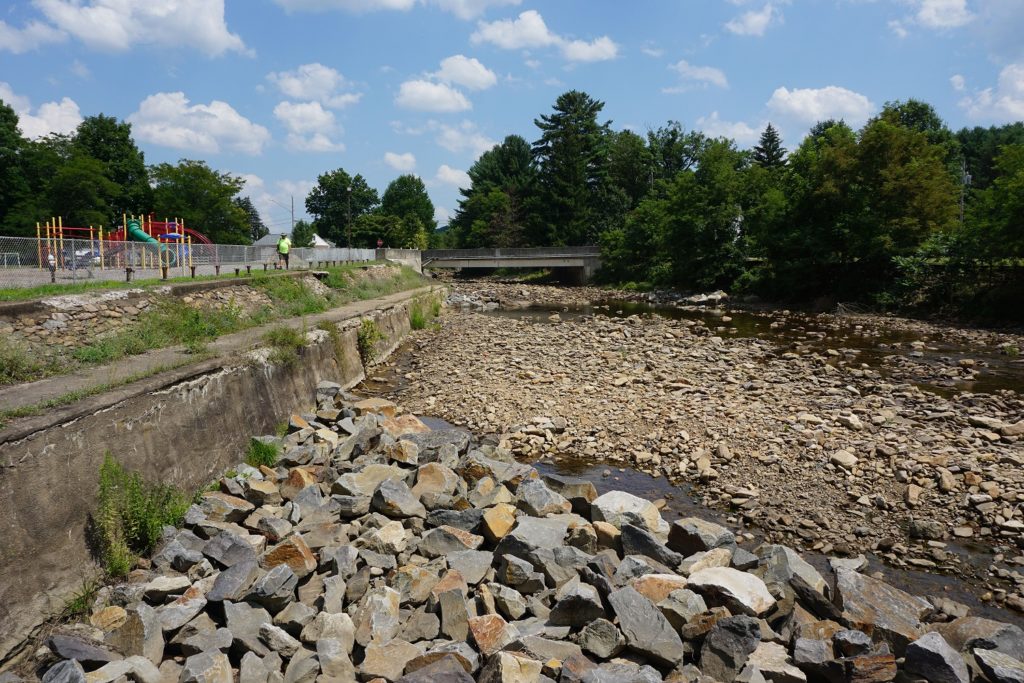
Following the construction of swimming pools and sports facilities, a dance hall was built in the borough in the 1950s. The dance hall featured many traveling acts, including nationally recognized artists like The Coronets, Duke Ellington, and musician and teen heart-throb Fabian. Today, the concrete block building appears unassuming from the exterior but original steel awnings provide a touch of flair that hint at the excitement of past shows within.
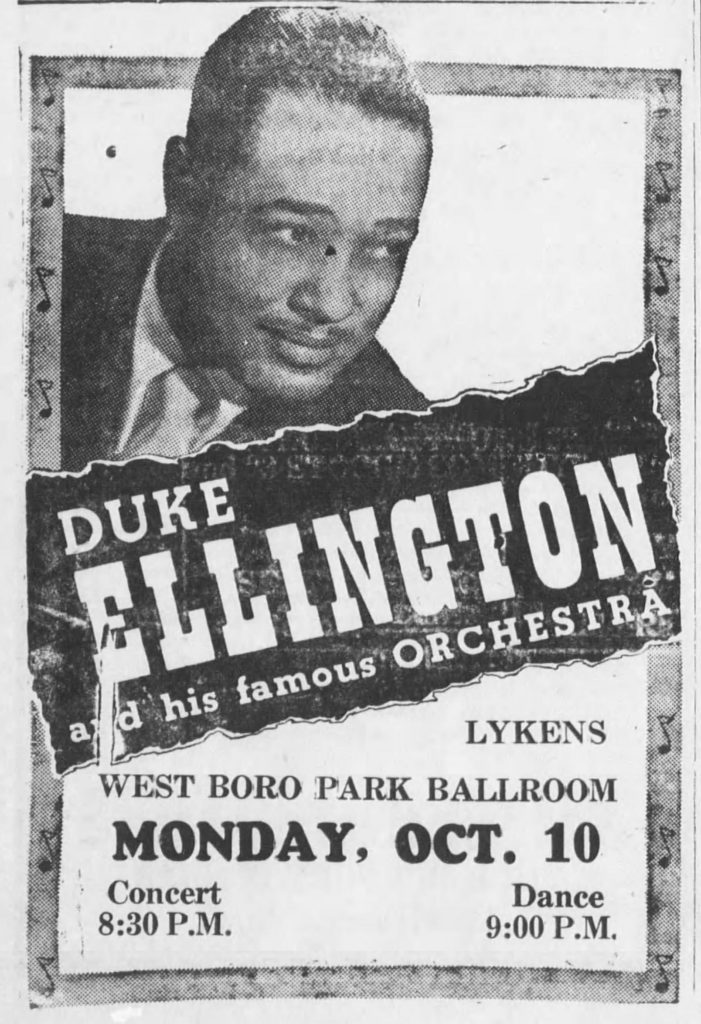
Tropical Storm Agnes
Tropical Storm Agnes moved across central Pennsylvania from June 21-24, 1972. Due to the path and slow speed of the storm, rainfall totals were high and caused flooding across the region. The unique position of Lykens, with creeks on three sides, led to particularly devastating flooding in the borough. Residents were forced to evacuate, and coal waste from the surrounding mines washed through houses, creating difficulties with cleanup and disposal after the flood. Many homes and businesses were later demolished.
Lykens after the Storm
After the waters receded in Lykens, a long, slow clean-up began. The borough’s comprehensive plan from 1975 described the flooding as “the greatest single disaster” in the community’s history. The clean-up efforts included work by residents, charitable organizations, and many state and federal agencies. The flooding led to the closure of the former dance hall, which became the borough office, and destroyed the gates used to create the swimming pools.
For some in the community, the flooding that accompanied Tropical Storm Agnes was the last straw. The outmigration that began following the closure of the coal mines in 1930 accelerated. Residents and business owners left the town for nearby areas that were less susceptible to flooding, or moved to larger regional population centers like Harrisburg, Reading, or Sunbury.
In 1970, before the storm, the population of the town was approximately 2,500. Since that time, the population has shrunk to just 1,779, resulting in increased residential vacancies and a loss of tax revenue.
Despite this adversity, the residents of Lykens continue to take pride in their past as a regional recreational center. They continue traditions including free concerts in the West Boro Park, open to all throughout the summer. Lykens’ experience serves as a reminder of the importance of documenting significant community resources before they are impacted by natural disasters such as fires and floods.
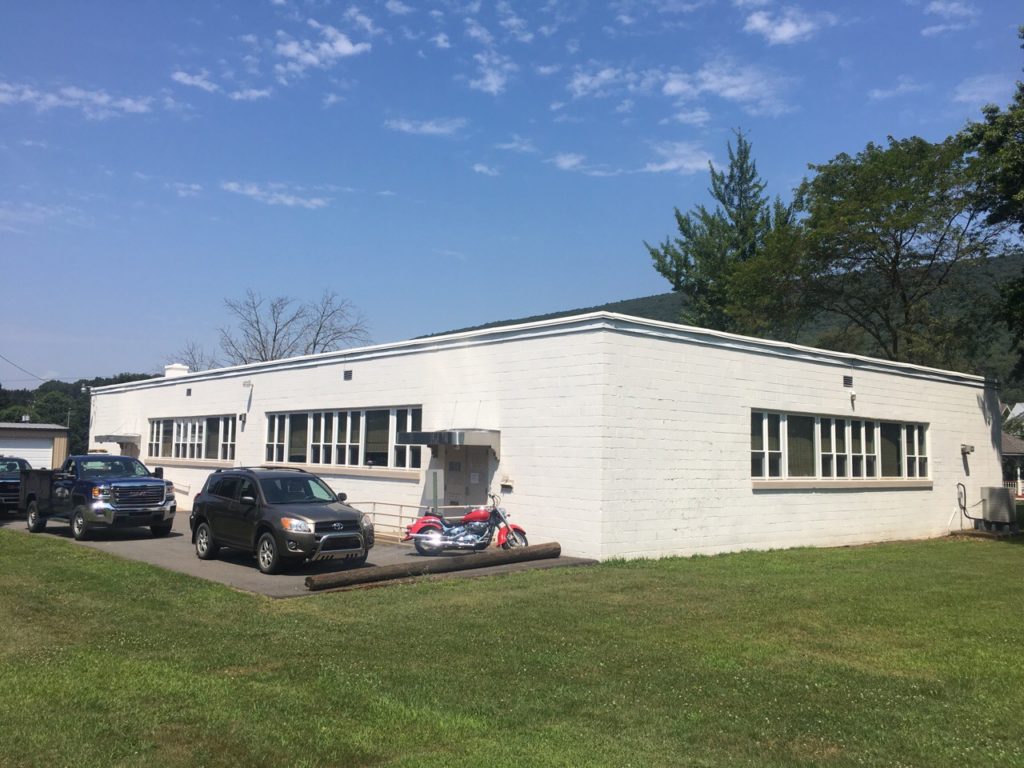
In the next few months we will cross the Susquehanna to survey communities in Perry and Cumberland Counties. Please keep an eye out for us; we love hearing the stories of your boroughs and villages straight from the people who call them home.
This week’s guest author is Benjamin Harvey. Benjamin is an architectural historian working for ASC Group’s Harrisburg, Pennsylvania Office. He has a degree in history, and works throughout Pennsylvania on historic preservation projects, including compliance projects, National Register nominations, and survey projects like this one. Benjamin was born and raised in Pennsylvania, and enjoys continually learning more about the many unique and interesting communities found throughout our state.
Comment Policy
PHMC welcomes and encourages topic-related comments on this blog. PHMC reserves the right to remove comments that in PHMC’s discretion do not follow participation guidelines.
Commenters and Comments shall be related to the blog post topic and respectful of others who use this site.
Commenters and Comments shall not: use language that is offensive, inflammatory or provocative (this includes, but is not limited to, using profanity, obscene, or vulgar comments); disparage other commenters or people; condone illegal activity; identify the location of known or suspected archeological sites; post personal information in comments such as addresses, phone numbers, e-mail addresses or other contact details, which may relate to you or other individuals; impersonate or falsely claim to represent a person or an organization; make any commercial endorsement or promotion of any product, service or publication.
If you would like to comment on other topics not related to this blog post but related to PHMC, please fill out the PHMC Contact Us Form.
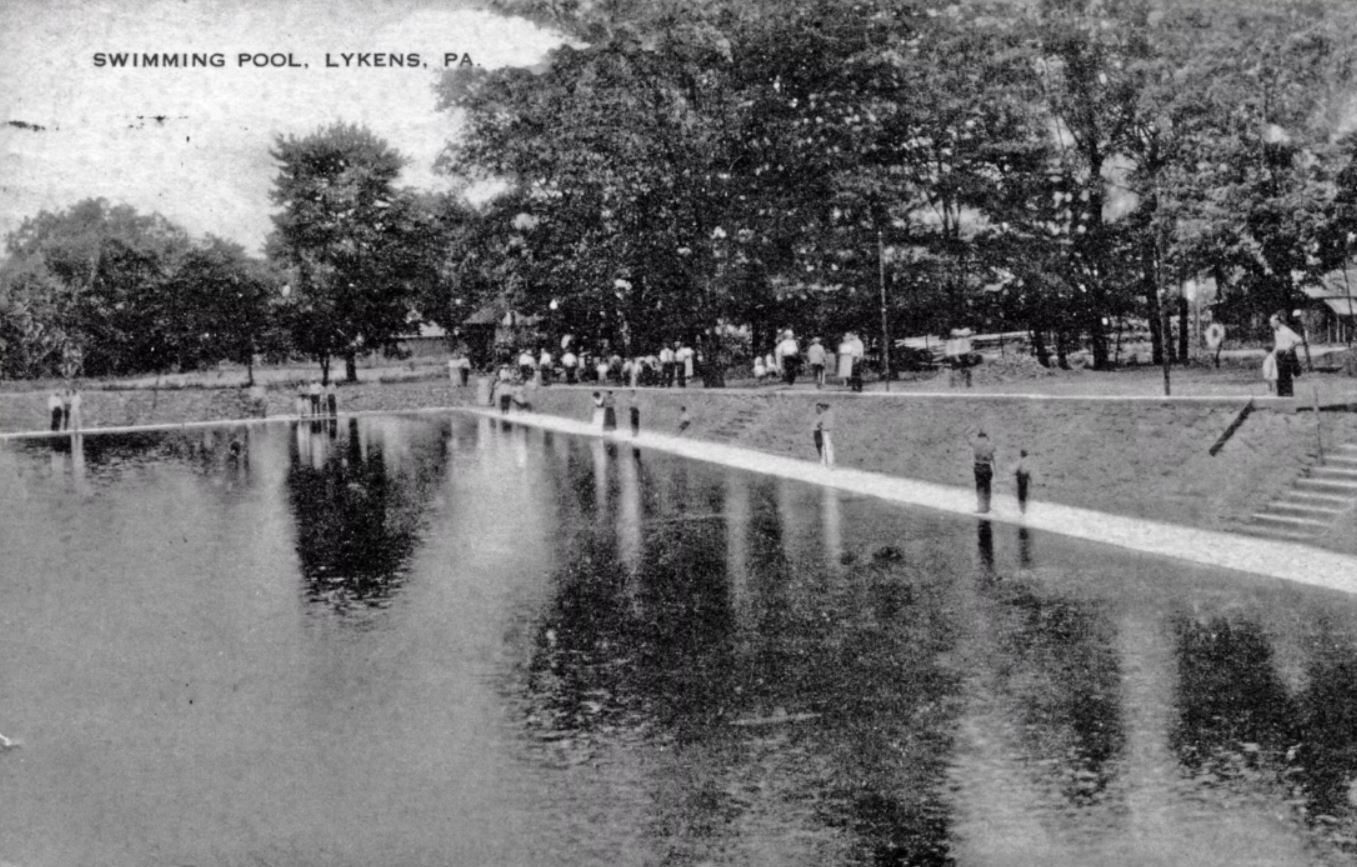
What an interesting story about the lasting impact of flooding on communities. The challenges Lykens and many other such places in PA face are very daunting. I look forward to leaning more about this great project in subsequent blogs.
I grew up in Lykens from 1952-1972. The Lykens town that I so fondly remember is no longer the same Lykens that I was born and raised. The town offered everything to its residents and nearby communities.
It offered two free swimming pools, a dance hall, a bowling Alley, an auto dealer, corner grocery stores and grocery chains. It had several doctors, dentists, and pharmacies. Churches of every Christian faith, a Catholic and a public schools, a library served its citizens. Restaurants, soda shops, and clothing stores were available as well.
The dress, shirts, and stocking factories were running at full employment for workers. Several large plantsor mills, employed skilled workers.
Lykens had its very own dairy, bakery, and newspaper. It had several bottling companies, specializing in soft drinks and beer.
It was home to the Lykens Hotel, only building in the entire valley having four stories. The town also offered specialty shops, jewelry, toy stores, Electronic and Hardware stores. Barbers and hairdressers were located throughout town. Lykens was home to insurance firms, lawyers, and the PA State Police. In its borders there was a parking garage, several filling stations, and auto repair. Lykens had a Taxidermy with a free attached museum.
In my sixty eight years, the most memorable of all my Lykens memories is the Santa Truck that went through town on Christmas Eve every year.
I agree I spent most of my youth in Lykens ~ they should have rebuilt the Boro pool
Accurate description of the town pre flood Terry. I grew up in Elizabethville and had family from Lykens. I was just remembering the taxidermy with attached museum with a friend but couldn’t remember the name. The Klingers family and friends still carry on the a Santa Truck tradition every Christmas Eve. I watch via Facebook live.
Danny and the juniors and Paul Anka
I grew up in Lykens
I love the historical info. and photos. Thank you! Is the dance hall the one that local youth went to each weekend to hang out in addition to bringing in performing artists at times? Note that it says above it was an entertainment venue, but I came from Wiconisco with friends to Lykens to hang out at the dance hall as a teen until the early to mid (probably mid) 70s, so it was a little later than the 50s-60s. Do you know what year it ended or what year it became a municipal building?
My Schindler roots grew deep in Lykens and much of the area including Wiconisco, and Williamstown. Maria (Eva) Buchin was one of the oldest residents of the area. She died at the age of 103, having immigrated to the US in 1855. Her obituary notes that when she came to Lykens she lived in one of only 7 log houses.
She was my 3rd Great Grandmother, and her daughter Catharine married Ernst Schindler also arriving in Lykens in early 1850. Most of the men naturally worked in the mines, and the women (mostly daughters) worked in the dress shops.
Now to confess, that the first home Ernst bought was in Wiconisco on Oak Street. But through out research it seems most family members mentioned they were going to Lykens or came from Lykens. Maybe it was because many references to travel by train, and the station was in Lykens. Or maybe it was that they were married in St. Mary’s Catholic Church (Our Lady Help of Christians), and were members. The story is that the Lutheran Church was no longer going to give sermons in English, but the Catholic Church would, so they converted.
Many family members are buried in the Catholic Cemetery or one of the others on what I call Lykens Cemetery Hill. If one stands beside that big white cross near the top of that hill, the view is certainly heavenly.
I remember swimming in the pool and playing around the pool. I wasn’t very old but remember visiting from the Pillow, PA area. The flood took out the covered bridge at Pillow.
The swimming area was very busy on the day I visited and for children, we played in the creek right around the dam. I remember it being very deep in the actual pool and fresh creek water. A fun time for all who went swimming in the hot summers.
I remember swimming at the Glenn and at the Park as a kid in the late 50″s and early 60″s. Picnics at the Glenn and swimming in both places.
I had so many good memories growing up there as a kid, and am so sad that they were flooded out and no longer exist.
What a great place!!!
My mother’s family grew up there and I remember spending summers as a child there with my Nana and cousin pre-flood in Agnes. Thank you to everyone who shared their memories of this special place, where everyone could forget their stress and angst from the outside world. My favorite memories are about swimming in the “big pool” until our lips were blue and we were shivering too much to be able to tell Nana that we didn’t want to get out because we weren’t cold:). Nana’s creek – or what’s left of it is actually visible there I just noticed, just under the bridge sadly. We spent hours wading in it, reading, and eating lunch on the steps in the wall as we enjoyed the warm Pennsylvania sun and that relaxing view. It appears “Martha’s house” – on the right must have survived but Nana’s house that she loved so much didn’t fare well. Apparently some of the beautiful White Birch trees my aunt lovingly planted in clumps must have survived however and what I see on the top left of the photo. I believe my uncles built the stone wall corraling that creek beside Nana’s house, and my cousin and I often talked about searching inside it for hidden treasure when we were very young. That slow and narrow little creek fed the “big pool” and we spent many hours wading in it and eating our lunches there. Thank you so much to everyone who shared their memories of this special place and hopefully Lykens will rally once again.